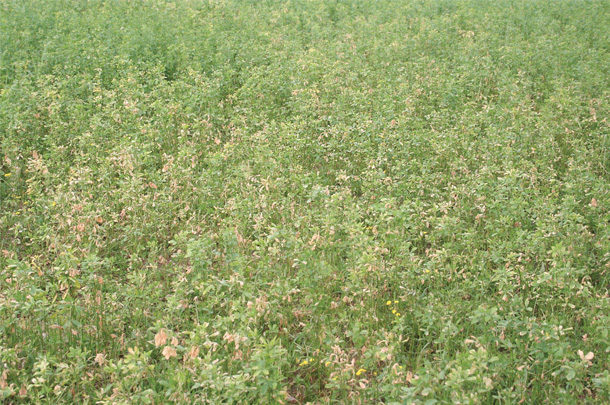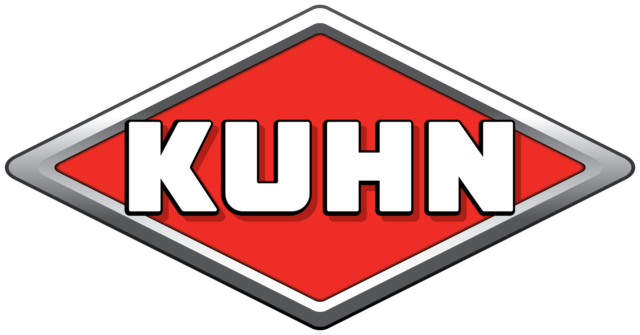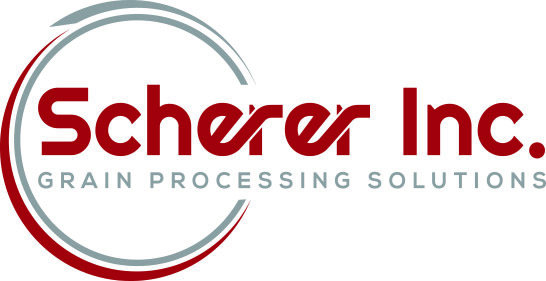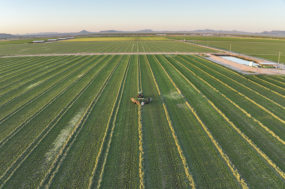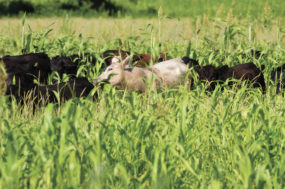Drought conditions encompassing the entire western U.S. have producers concerned about declining hay and forage inventories.
Several producers I have spoken with over the past few months have already moved cattle to pastures they had planned to stockpile for winter, sold part of their herd or started haying wheat stubble for emergency forage. Along with these common drought management practices, here are a few ways to stretch forage through the year.
Mixing with co-products
First, consider mixing with distillers co-products such as wet distillers (WDGS) and/or syrup. Mixing with co-products will increase palatability, boost intake and increase nutritional value through the addition of protein and soluble carbohydrates. Producers near ethanol plants may be able to obtain small batches of WDGS and mix with chopped hay through the coming months. Larger operations, or those without easy access to small batches of WDGS, can ensile a mixture of low-quality hay or straw and WDGS.
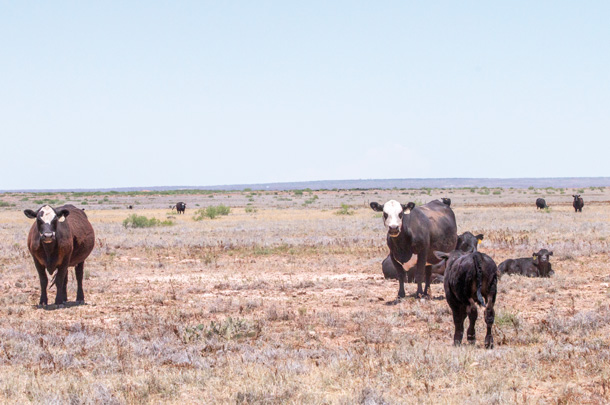
Mixing forages with co-products, ammoniating straw and utilizing non-forage fiber sources are strategies to consider when feeding through a drought. Photo by Joy Hendrix.
Principles for good silage apply when ensiling WDGS with straw. The forage must be chopped into smaller particles, thoroughly mixed with the WDGS, compacted and covered with plastic or bagged. Furthermore, mix the forage and WDGS at a ratio that ensures dry matter of the mixture to be ensiled is no more than 50%. These steps ensure oxygen is not present and creates an anaerobic environment to prevent spoilage. Upon feedout, analyzing for nutrient levels and pH will give producers the data needed to stretch the forage through a precise ration and evaluate potential mold or mycotoxin risks.
Ammoniate straw
Second, straw – such as the small-grain residues mentioned above – may be ammoniated. Ammoniating increases palatability and digestibility through breaking down some of the fibrous content of the forage, and the non-protein nitrogen provides protein for ruminant animals. Moreover, due to the increase in palatability, intake can also increase up to approximately 20%. Therefore, producers may need to limit intake and balance nutrients precisely to get the most out of this strategy. When ammoniating, it is key to request wet chemistry laboratory analysis for accuracy, and testing for non-protein nitrogen will help when formulating diets.
Never ammoniate quality forages, as toxicity may occur. Ammoniated forages should contain no more than 5% crude protein (CP) and 45% total digestible nutrients (TDN). The ideal moisture for ammoniation is greater than 10% – however, be cautious of potential combustion; moisture should not be higher than 18%. Therefore, optimal moisture is between 10% and 18% for ammoniation. Ammonia treatment is typically done using anhydrous ammonia. Always use caution when utilizing dangerous chemicals and follow a well-established protocol.
Replace
A third option to help stretch our forages is to replace a portion of the diet with other feed ingredients. Rumen health and feed costs are considerations when substituting a portion of the diet for non-forage feeds. Energy concentrates such as corn can only replace a small portion of the forages before acidosis becomes an issue, and these feeds are likely cost-prohibitive. Instead consider non-forage fiber sources. These include oat hulls, soyhulls, cotton hulls and high-fiber co-products such as brewers grains, corn gluten and beet pulp.
These non-forage fiber sources are high in neutral detergent fiber (NDF) but have a small particle size. However, they do not have the high starch or soluble carbohydrate content compared with other feedstuffs. Therefore, these feeds can make up a larger proportion of the total ration before acidosis becomes an issue.
Calculate inclusion rates
Careful formulation of the diet, starting with feed testing, will be required to determine optimal inclusion rates. Research into the specific guidance on alternative feeds would be recommended because each alternative has its own considerations to evaluate. For example, both cottonseed hulls and soyhulls can be included as up to 25% of the diet. However, soyhulls, being less bulky and difficult to handle, are best delivered in a pelletized form. However, if these pellets are not mixed into a ration and are consumed too quickly, choking may occur. Furthermore, soyhulls have been associated with bloat more often than cottonseed hulls. Meanwhile, corn gluten is “typically” fed at 25% of the diet and can be included up to 50% of the diet before minerals and rumen health issues occur. The differences between these co-products in addition to availability may mean the best option differs by individual operation.
All these non-forage fiber sources have a smaller particle size than forages, which decreases rumination time, meaning less saliva and buffers reach the rumen. With less buffering capacity, these feeds may still result in acidosis. Therefore, limiting intake is recommended, and producers may consider supplementing with a buffer. Chopping forages when feeding with these fiber alternatives would not be advantageous. Ensuring long fibers are still present in the rumen to maintain the floating mat and, therefore, gut health is optimal.
Now is the time to start planning for stockpiling and stretching your forages to get through this drought year. Mixing forages with co-products, ammoniating straw and utilizing non-forage fiber sources are strategies to consider when feeding through a drought.
